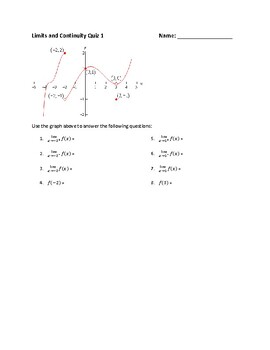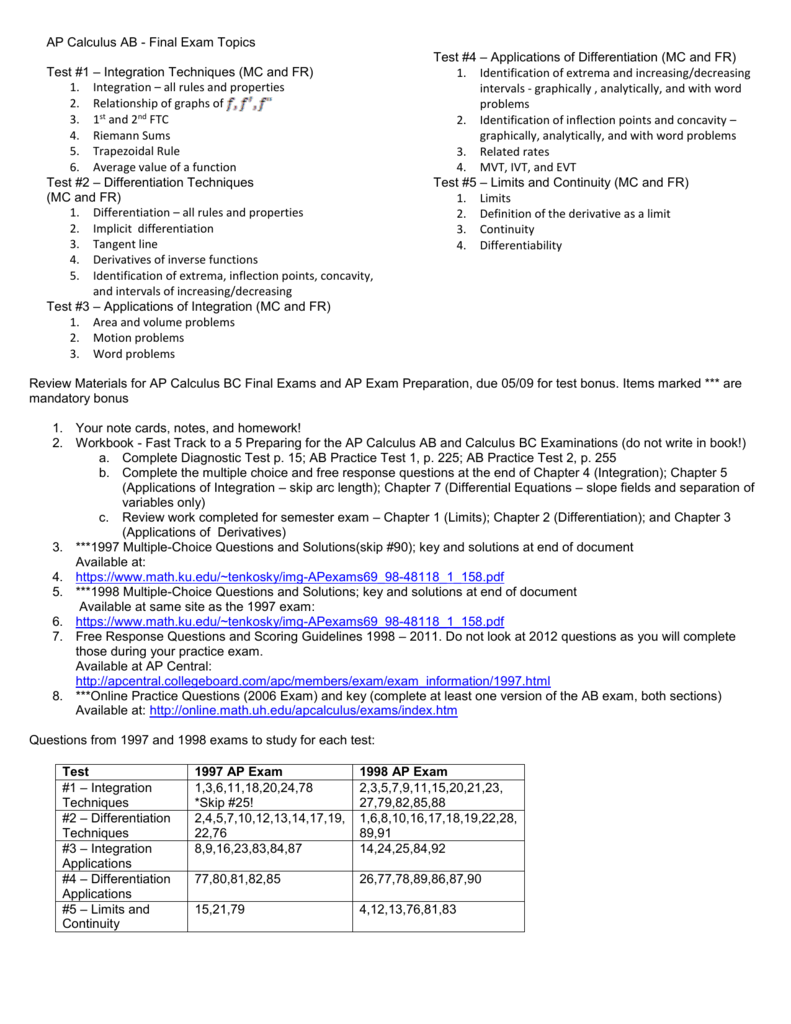1limits & Continuityap Calculus
- 1 Limits & Continuityap Calculus 14th Edition
- Ap Calculus Limits And Continuity Quiz #1-a
- 1 Limits & Continuityap Calculus Calculator
- 1 Limits & Continuityap Calculus Ab
- 1 Limits & Continuityap Calculus 2nd Edition
Intermediate steps

The derivative of a sum of two functions is the sum of the derivatives of each function
ANSI/ISEA Z89.1-2014 Revision American National Standard for Industrial Protection ANSI/ISEA Z89.1-2014 This is the seventh revision of the standard that provides performance. Can anybody explain me the diff. And why I'm getting the following results Limits.getDMLStatements = 2 and Limits.getLimitDMLStatements = 150 List; acc = SELECT Id FROM Acco. Find the Exchange Online limits for a variety of service areas, including address book limits, mailbox storage limits, and reporting and message trace limits, to name just a few.
The derivative of a function multiplied by a constant ($2$) is equal to the constant times the derivative of the function
The power rule for differentiation states that if $n$ is a real number and $f(x) = x^n$, then $f'(x) = nx^{n-1}$
The derivative of a sum of two functions is the sum of the derivatives of each function
The derivative of a function multiplied by a constant ($-2$) is equal to the constant times the derivative of the function
The power rule for differentiation states that if $n$ is a real number and $f(x) = x^n$, then $f'(x) = nx^{n-1}$
The derivative of a sum of two functions is the sum of the derivatives of each function
The derivative of the constant function ($-3$) is equal to zero
The derivative of the linear function is equal to $1$
The derivative of a sum of two functions is the sum of the derivatives of each function
The power rule for differentiation states that if $n$ is a real number and $f(x) = x^n$, then $f'(x) = nx^{n-1}$
The derivative of a sum of two functions is the sum of the derivatives of each function
The derivative of a function multiplied by a constant ($2$) is equal to the constant times the derivative of the function
The power rule for differentiation states that if $n$ is a real number and $f(x) = x^n$, then $f'(x) = nx^{n-1}$
The derivative of a sum of two functions is the sum of the derivatives of each function
The derivative of the constant function ($1$) is equal to zero
The derivative of the linear function times a constant, is equal to the constant
4After deriving both the numerator and denominator, the limit results in
Approaching ...
Sometimes we can't work something out directly ... but we can see what it should be as we get closer and closer!Example:
(x2 − 1)(x − 1)
Let's work it out for x=1:
(12 − 1)(1 − 1) = (1 − 1)(1 − 1) = 00
Now 0/0 is a difficulty! We don't really know the value of 0/0 (it is 'indeterminate'), so we need another way of answering this.
So instead of trying to work it out for x=1 let's try approaching it closer and closer:
Example Continued:
| x | (x2 − 1)(x − 1) |
| 0.5 | 1.50000 |
| 0.9 | 1.90000 |
| 0.99 | 1.99000 |
| 0.999 | 1.99900 |
| 0.9999 | 1.99990 |
| 0.99999 | 1.99999 |
| ... | ... |
Now we see that as x gets close to 1, then (x2−1)(x−1) gets close to 2
We are now faced with an interesting situation:
- When x=1 we don't know the answer (it is indeterminate)
- But we can see that it is going to be 2
We want to give the answer '2' but can't, so instead mathematicians say exactly what is going on by using the special word 'limit'.

The limit of (x2−1)(x−1) as x approaches 1 is 2
And it is written in symbols as:
limx→1x2−1x−1 = 2
1 x^2~−1/x−1 = 2 -->So it is a special way of saying, 'ignoring what happens when we get there, but as we get closer and closer the answer gets closer and closer to 2'
As a graph it looks like this: So, in truth, we cannot say what the value at x=1 is. But we can say that as we approach 1, the limit is 2. |
Test Both Sides!
It is like running up a hill and then finding the path is magically 'not there'...
... but if we only check one side, who knows what happens?
So we need to test it from both directions to be sure where it 'should be'!
Example Continued
So, let's try from the other side:
| x | (x2 − 1)(x − 1) |
| 1.5 | 2.50000 |
| 1.1 | 2.10000 |
| 1.01 | 2.01000 |
| 1.001 | 2.00100 |
| 1.0001 | 2.00010 |
| 1.00001 | 2.00001 |
| ... | ... |
Also heading for 2, so that's OK
When it is different from different sides
How about a function f(x) with a 'break' in it like this:
The limit does not exist at 'a'
We can't say what the value at 'a' is, because there are two competing answers:
- 3.8 from the left, and
- 1.3 from the right
But we can use the special '−' or '+' signs (as shown) to define one sided limits:
- the left-hand limit (−) is 3.8
- the right-hand limit (+) is 1.3
And the ordinary limit 'does not exist'
Are limits only for difficult functions?
Limits can be used even when we know the value when we get there! Nobody said they are only for difficult functions.
Example:
limx→10x2 = 5
10 x/2 = 5 -->We know perfectly well that 10/2 = 5, but limits can still be used (if we want!)
Approaching Infinity
Infinity is a very special idea. We know we can't reach it, but we can still try to work out the value of functions that have infinity in them.
Let's start with an interesting example.
1 Limits & Continuityap Calculus 14th Edition
| Question: What is the value of 1∞ ? |
| Answer: We don't know! |
Why Don't We Know?
The simplest reason is that Infinity is not a number, it is an idea.
So 1∞ is a bit like saying 1beauty or 1tall.
Ap Calculus Limits And Continuity Quiz #1-a
Maybe we could say that 1∞= 0, ... but that is a problem too, because if we divide 1 into infinite pieces and they end up 0 each, what happened to the 1?
In fact 1∞ is known to be undefined.
But We Can Approach It!
So instead of trying to work it out for infinity (because we can't get a sensible answer), let's try larger and larger values of x:
1 Limits & Continuityap Calculus Calculator

| x | 1x |
| 1 | 1.00000 |
| 2 | 0.50000 |
| 4 | 0.25000 |
| 10 | 0.10000 |
| 100 | 0.01000 |
| 1,000 | 0.00100 |
| 10,000 | 0.00010 |
Now we can see that as x gets larger, 1x tends towards 0
We are now faced with an interesting situation:
- We can't say what happens when x gets to infinity
- But we can see that 1x is going towards 0
We want to give the answer '0' but can't, so instead mathematicians say exactly what is going on by using the special word 'limit'.
1 Limits & Continuityap Calculus Ab
The limit of 1x as x approaches Infinity is 0
1 Limits & Continuityap Calculus 2nd Edition
And write it like this:
limx→∞1x = 0
 INF 1/x = 0 -->
INF 1/x = 0 -->In other words:
As x approaches infinity, then 1x approaches 0
It is a mathematical way of saying 'we are not talking about when x=∞, but we know as x gets bigger, the answer gets closer and closer to 0'.
Read more at Limits to Infinity.
Solving!
We have been a little lazy so far, and just said that a limit equals some value because it looked like it was going to.
That is not really good enough! Read more at Evaluating Limits.
